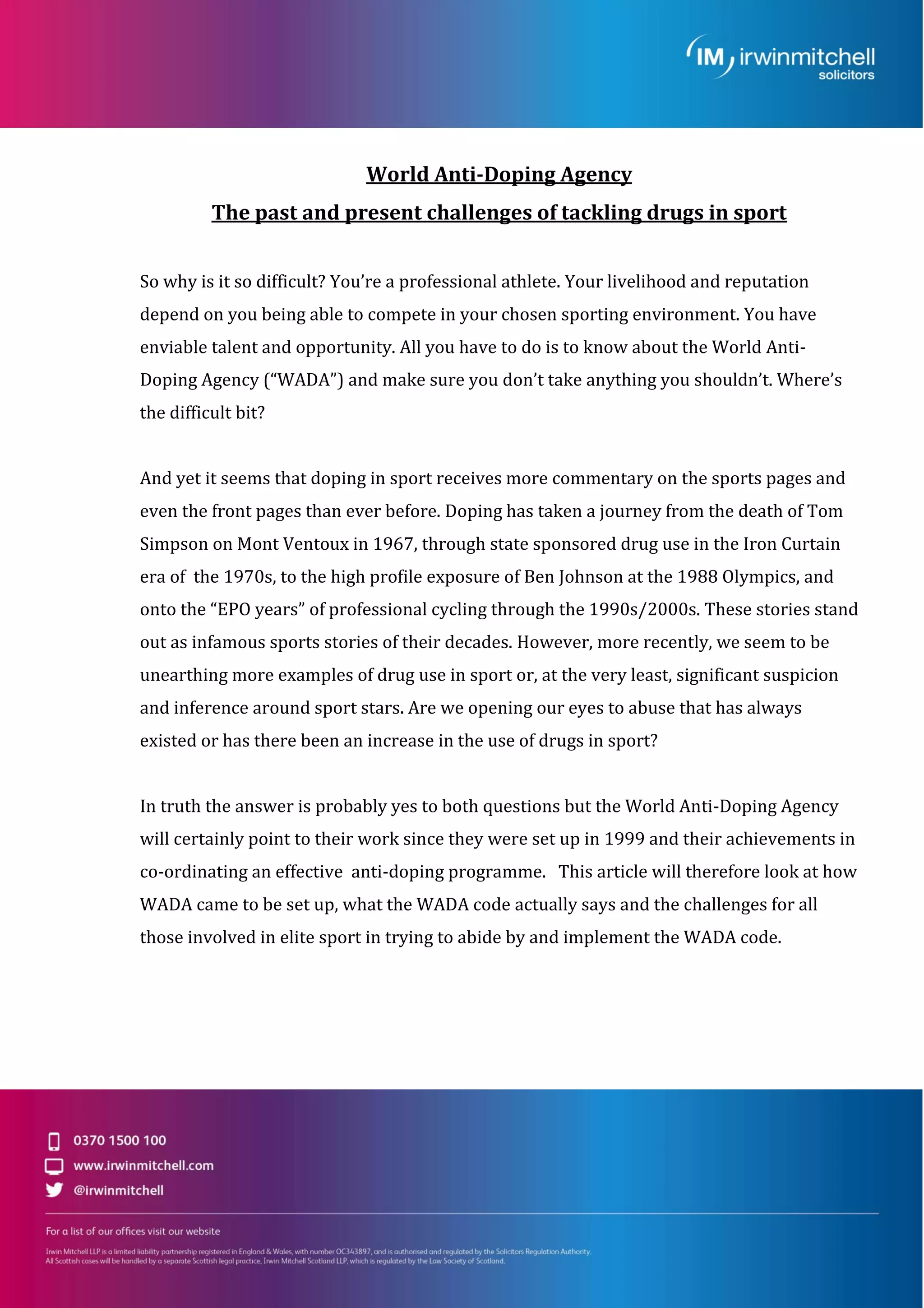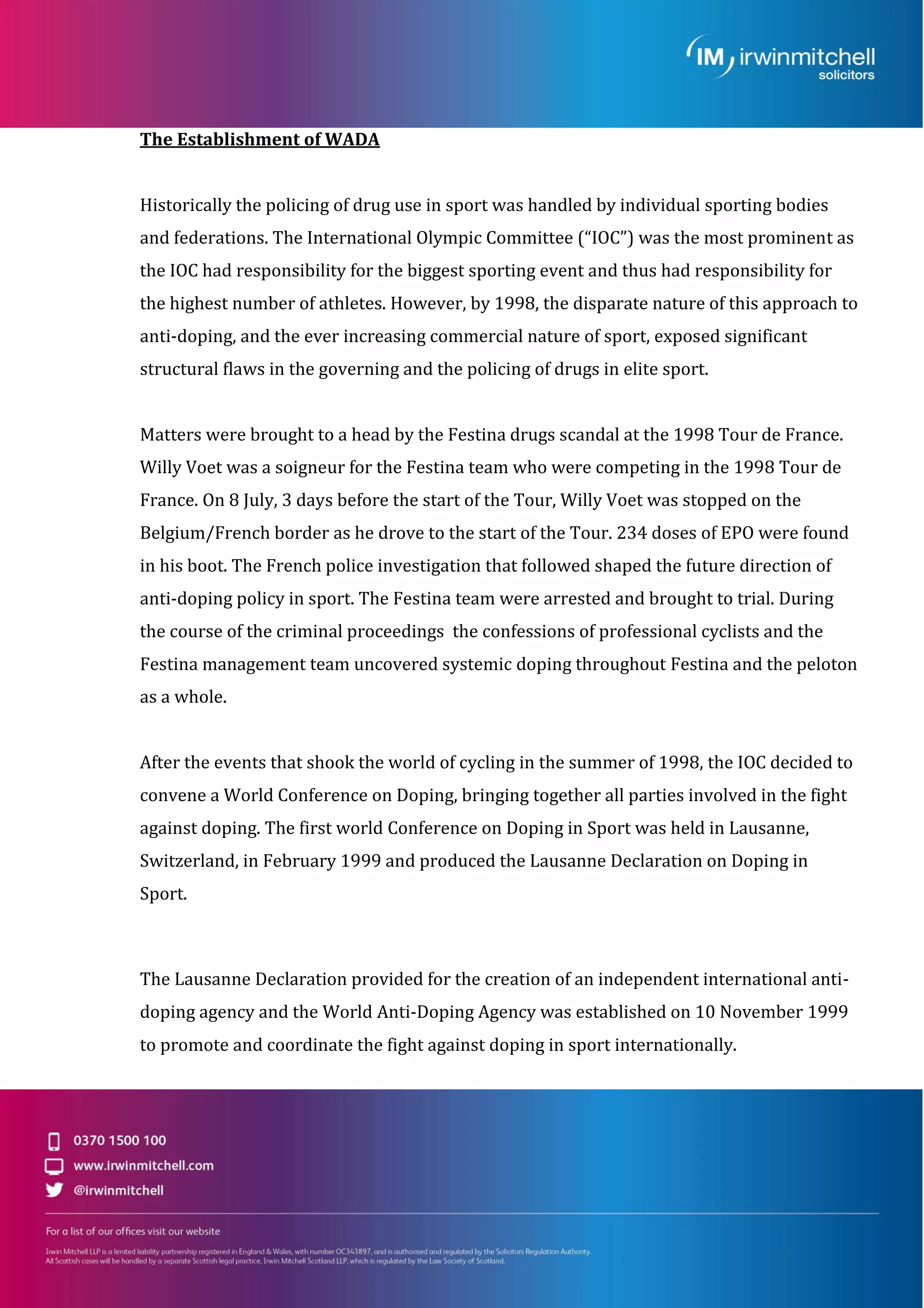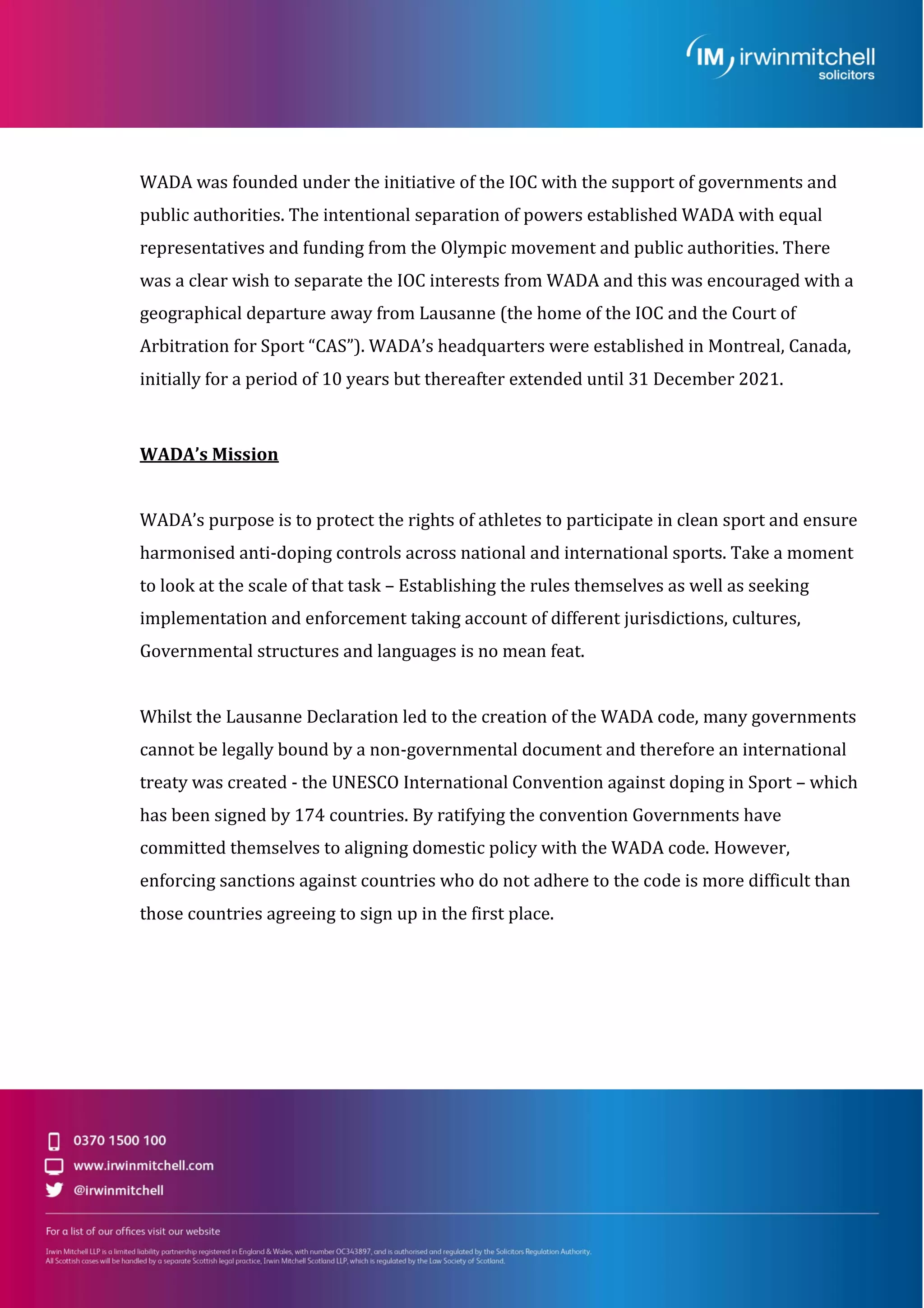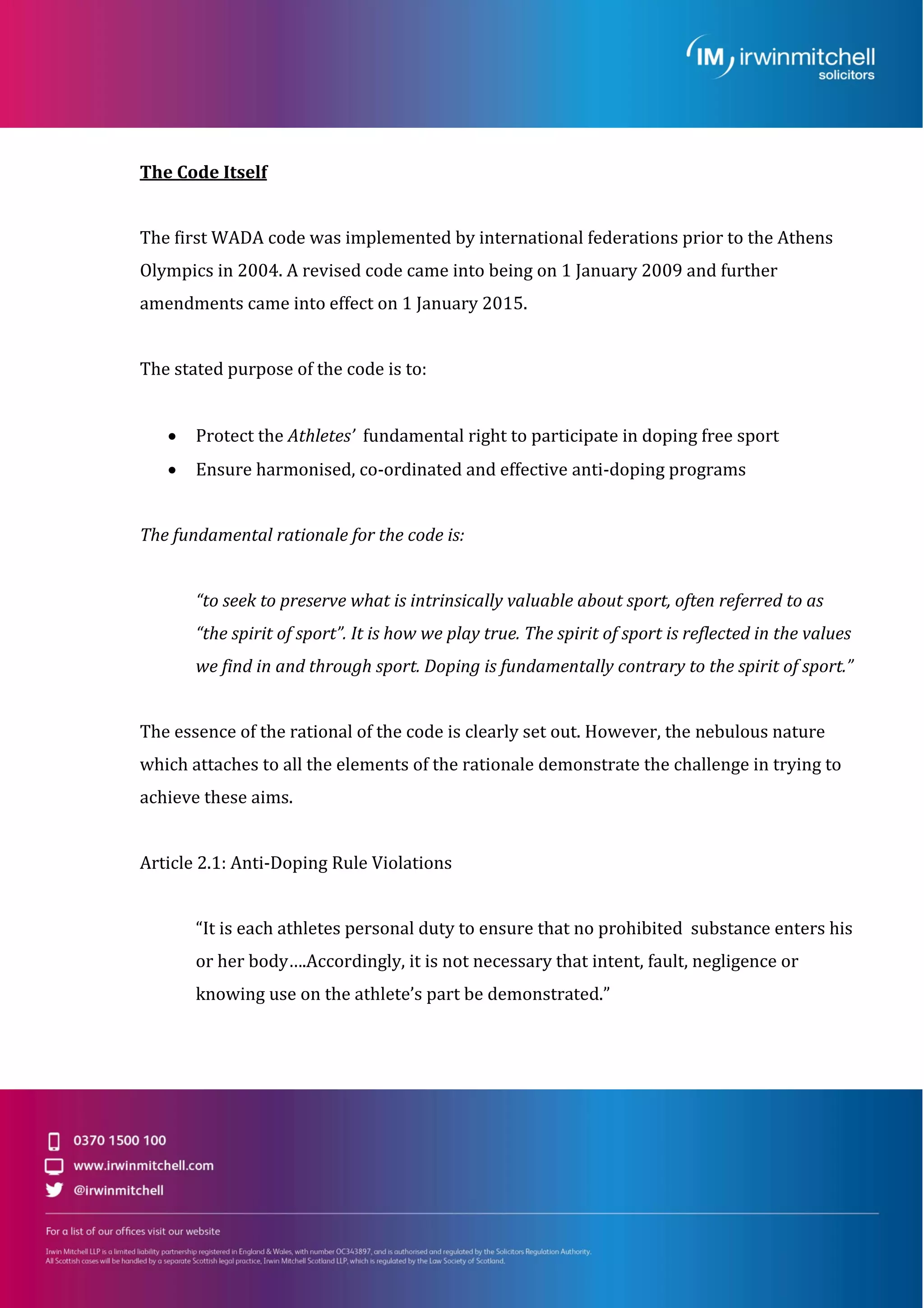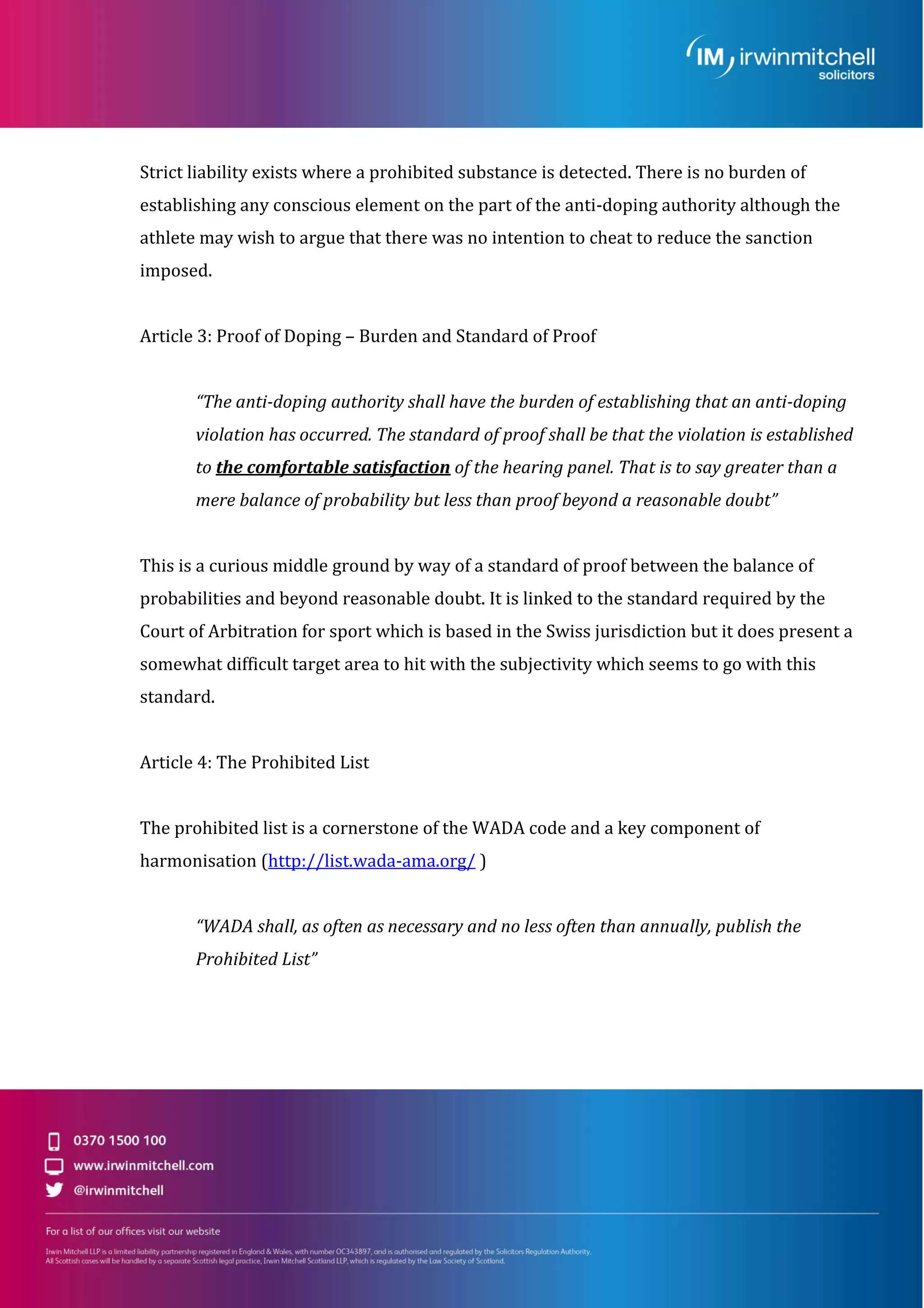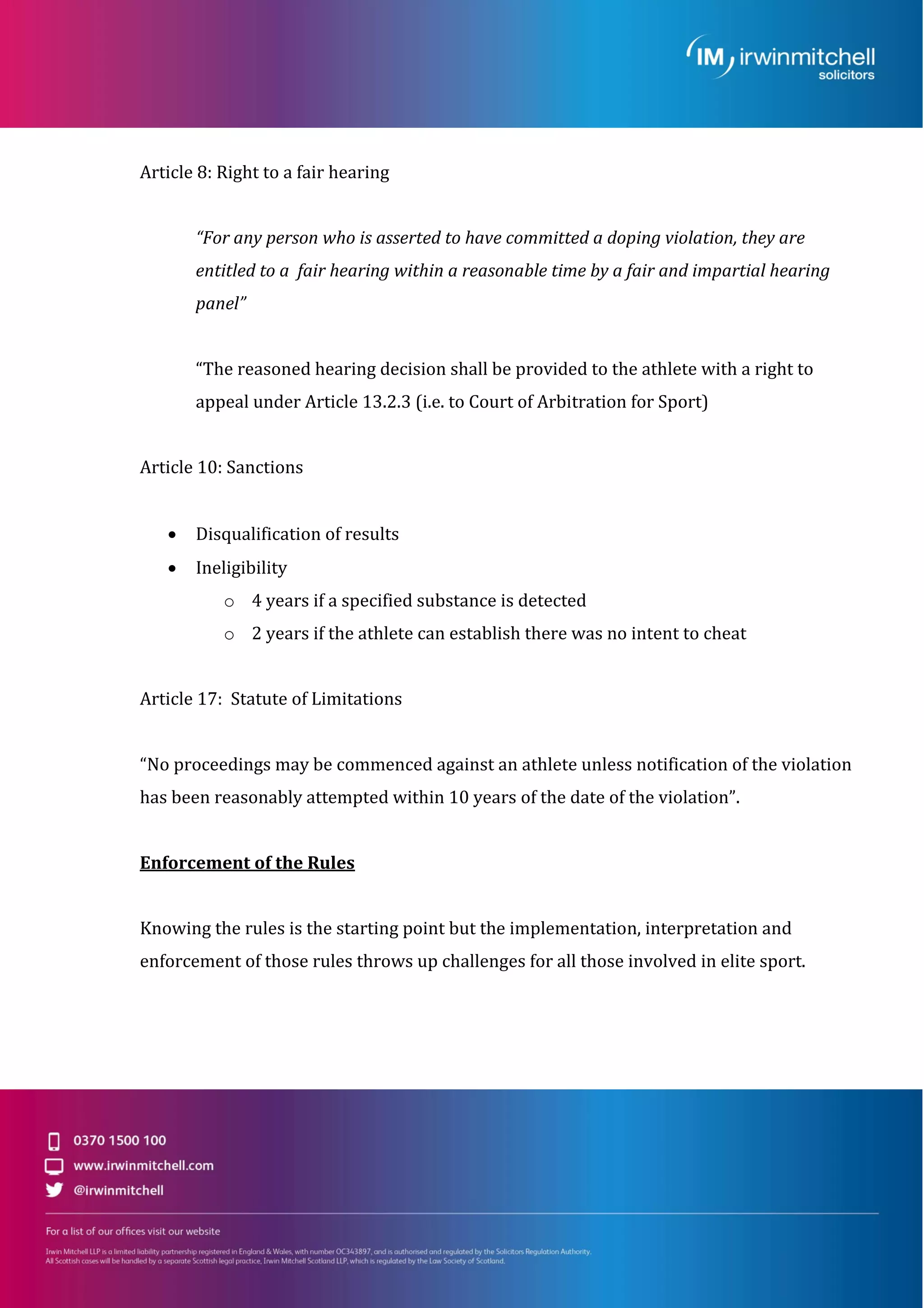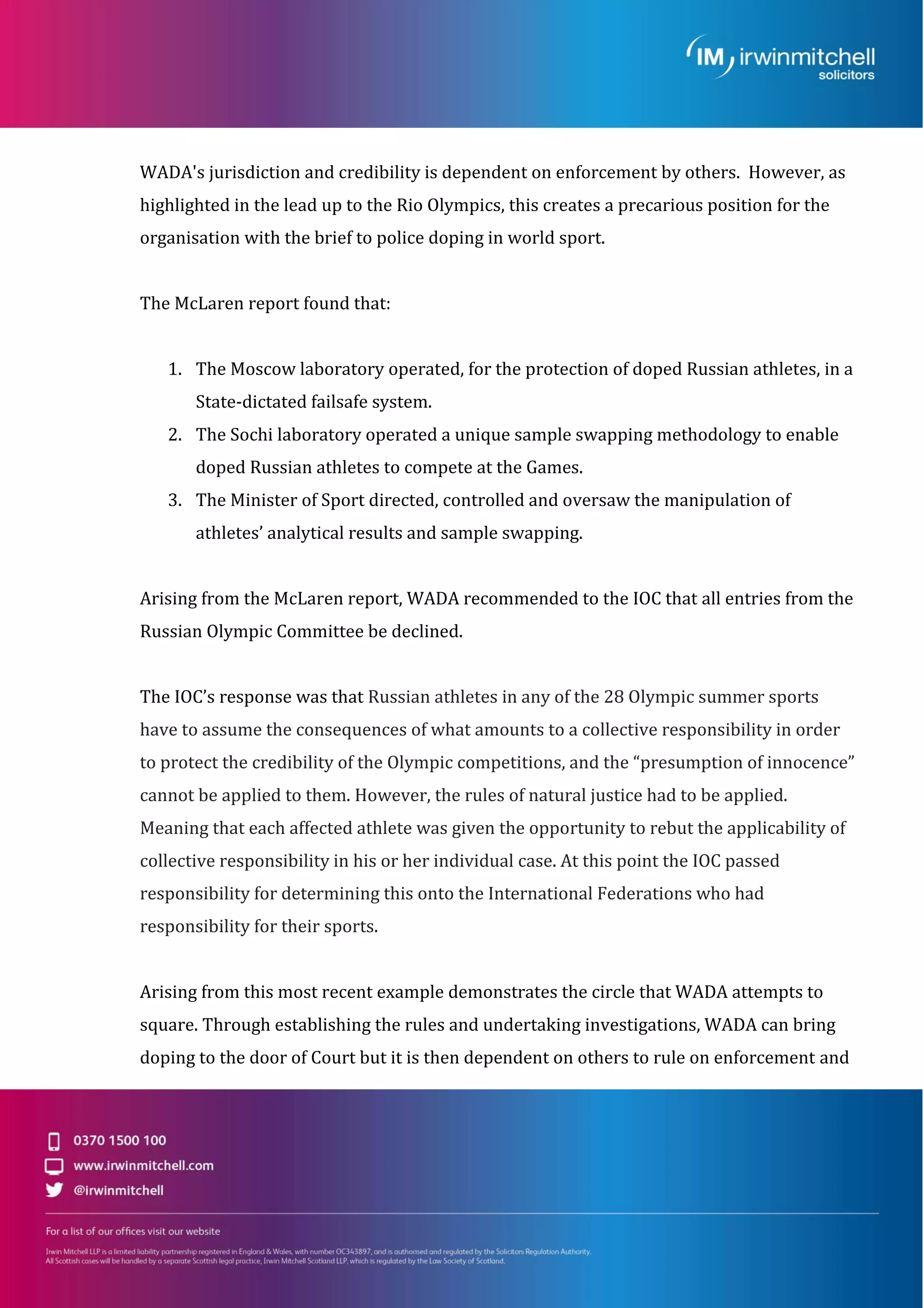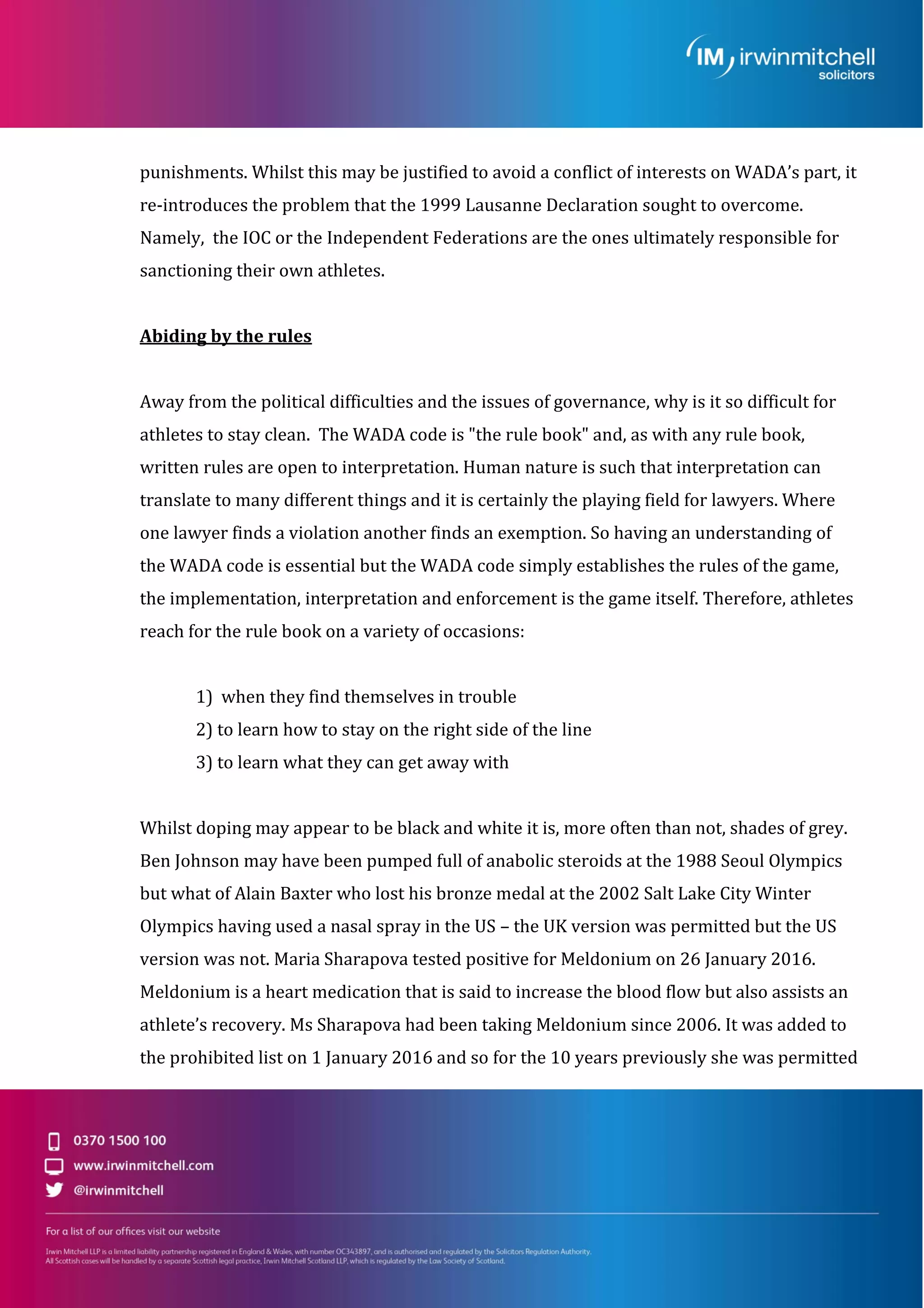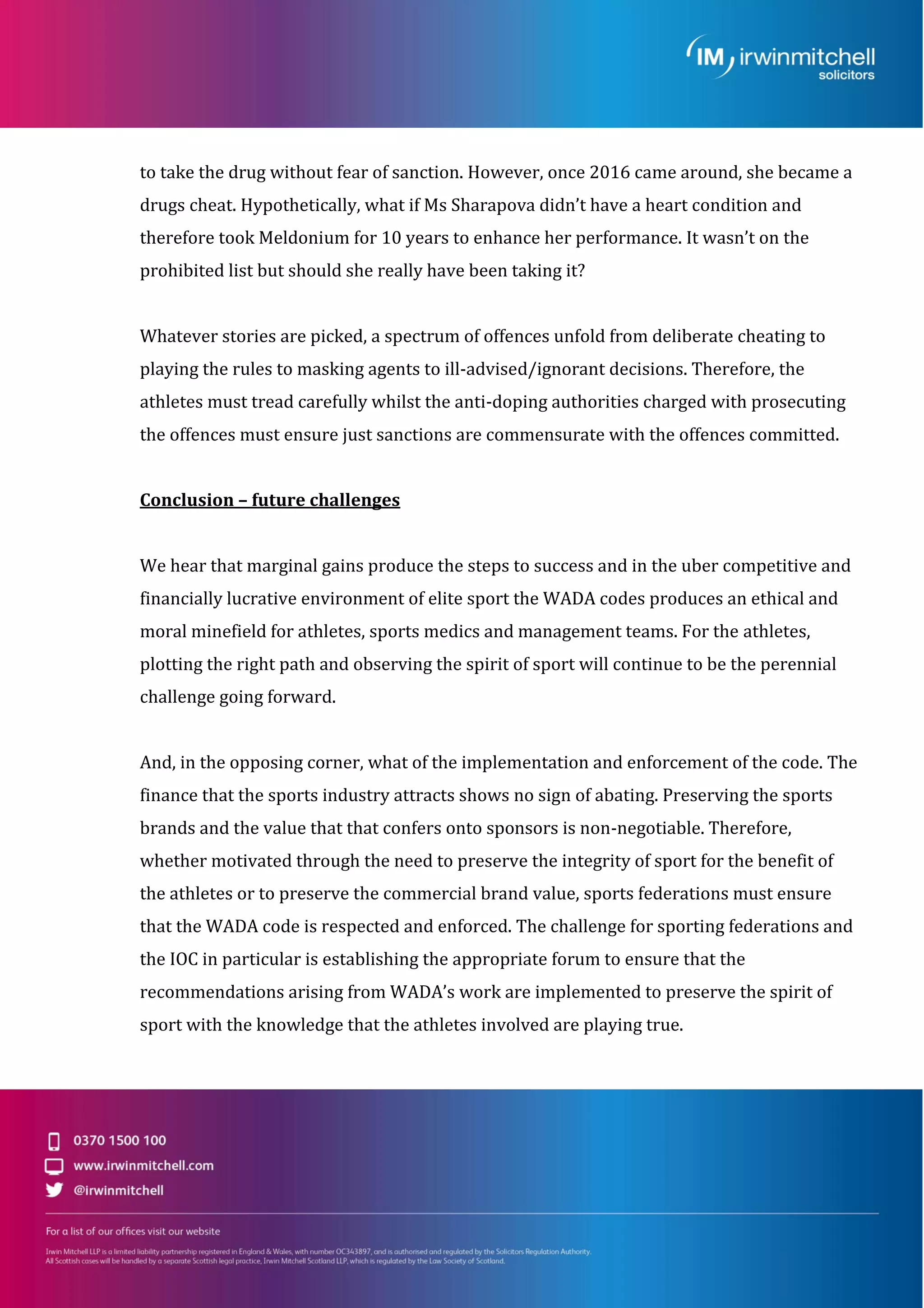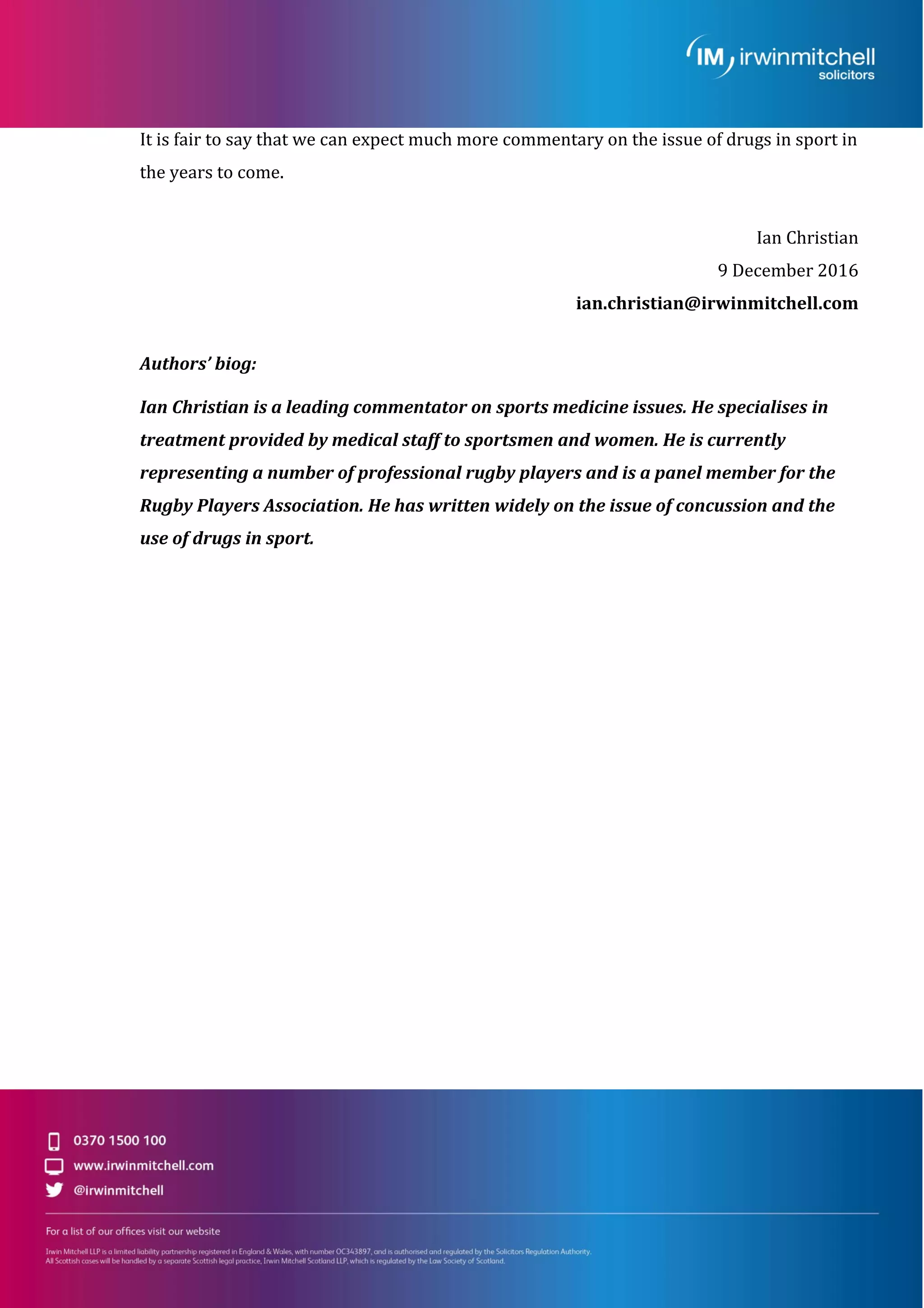The document discusses the challenges of tackling doping in sport through the World Anti-Doping Agency (WADA). It outlines WADA's establishment in 1999 in response to high-profile doping scandals. WADA aims to harmonize anti-doping efforts and protect clean athletes through its code. However, enforcing the code faces challenges due to differing jurisdictions, athlete and federation interpretations, and the need for independent rulings on sanctions. Strict liability for doping and complex standards of proof add to the difficulties. Overall, abiding by anti-doping rules in elite sport's competitive environment will continue to be a challenge for both athletes and regulators.
